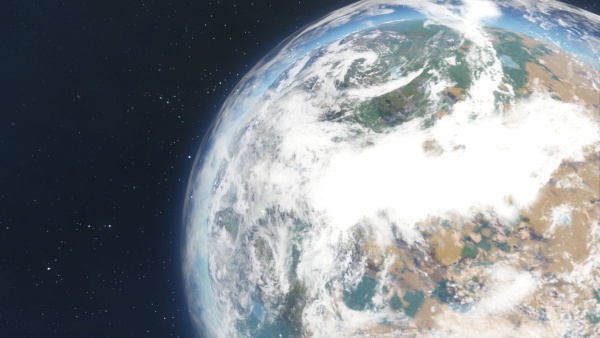Difference between revisions of "Planet"
m (→Planet Variants) |
(including some over-viewing summary, and surface generation) |
||
| Line 3: | Line 3: | ||
== Overview == | == Overview == | ||
| − | < | + | {{PAGENAME}}s are destructible voxel objects with their own [[Gravity]] field, atmosphere, vegetation, and hostile life. They are similar to [[Asteroid]]s in they contain fully destructible, and have randomly generated [[Ore]]s, but that's where their similarities end. Planets range in size from <code>19km</code> to <code>120km</code> in diameter. |
| + | |||
| + | === Surface Generation === | ||
| + | While their surface appears randomly generated, they're in fact pre-loaded voxel models. There is no procedural generation with {{PAGENAME}}s or [[Moon]]s. When the size of the {{PAGENAME}} is increased, it actually stretches the models to accommodate for the new size. The textures and vegetation aren't stretched, only the surface model is. | ||
=== Ore Generation === | === Ore Generation === | ||
| + | |||
<General explanation of what types of ores spawn on planets, where are they common, are they underground> | <General explanation of what types of ores spawn on planets, where are they common, are they underground> | ||
Revision as of 13:24, 13 March 2016

Contents
Overview
Planets are destructible voxel objects with their own Gravity field, atmosphere, vegetation, and hostile life. They are similar to Asteroids in they contain fully destructible, and have randomly generated Ores, but that's where their similarities end. Planets range in size from 19km to 120km in diameter.
Surface Generation
While their surface appears randomly generated, they're in fact pre-loaded voxel models. There is no procedural generation with Planets or Moons. When the size of the Planet is increased, it actually stretches the models to accommodate for the new size. The textures and vegetation aren't stretched, only the surface model is.
Ore Generation
<General explanation of what types of ores spawn on planets, where are they common, are they underground>
Ores (except Platinum) are generated in two ways:
1. Beyond the surface (~15 to ~50 Meters): Large horizontal veins of ores with a thickness of a few meters. Each ore patch usually contains 1 to 4 ores. Different ores of the same patch can be found in different height levels. The surface above the ore patches is slightly darker and in a brown-ish color, so they can be easily spotted from a higher position. Dense Grass can make spotting harder.
2. On the surface inside rocks: The ore is hidden inside stone rocks that are spread randomly over the surface. Under <some conditions>, the positions of undrilled rocks are reseted completely, so GPS-Markers on these rocks become void. The rocks are also voxel entities, that are seperate from the planets voxels. They do overlap the planet in the way that station blocks do. After drilling the rocks above the surface, it is a good advice to drill into the (planets) ground for more hidden ore. Rocks are all about the same size, they contain about ~20,000 of rare ores up to ~100,000 of iron ore.
Hazards
<Description of the hazards of planets compared to space>
Planets often have enemy bases, with occasional patrols.
On the Alien planet, Sabiroids spawn.
Planet Variants
<Explanation of planets having different types>
There are three types of planets, as follows. Earth, Mars, and Alien.
Earth-Like
<Summary here>
Mars
<Summary here>
Alien
<Summary here>
Natural Gravity
<A general explanation of how planet gravity and its effects work. Heavily detailed information about natural gravity should go into the link below>
Thruster Behavior
<Explanation on how natural thrusters affect Ion thrusters and how they differ from Atmosphere ones>
 This article is a
This article is a